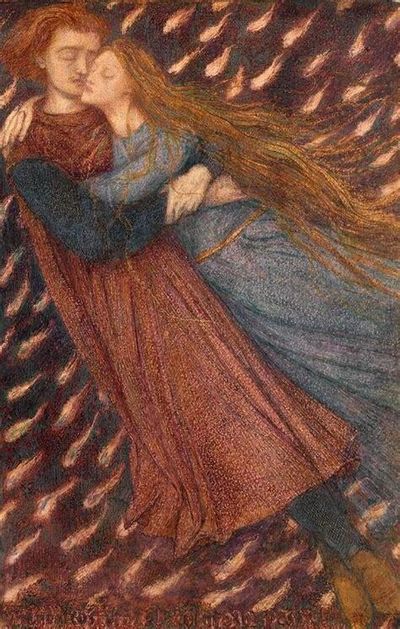Christina Rossetti and the Pre-Raphaelites

Christina Rossetti was involved with The Pre-Raphaelites, largely because her artist brother, Dante Gabriel, founded the movement in 1848 with John Millais and William Holman Hunt.
But who were The Pre-Raphaelites?
Artists in search of a new and fresh direction in their work? Bohemian rebels who were the “rock stars” of their day with their unconventional lifestyles? Innovators who rejected the academic art rules & regulations of their time and wanted to revive the detailed and vibrant color, line, and texture of early Renaissance painting?
All of these aspects . . . and more
Mostly, they were dissatisfied with the industrialization and commercialism of their era and sought to create art that hearkened back to an era "before Raphael." They often found inspiration in literature, poetry, and mythology, such as the Arthurian legends, Dante and Beatrice, and Greek goddesses; and, their art frequently depicted romantic and idealized scenes. Certainly, not everyone approved. When some people saw their paintings at early exhibitions, they were taken aback at the bright colors and provocative themes. In 1850, Charles Dickens described Millais’s depiction of the Virgin Mary in Christ in the House of His Parents as a degenerate type, one who was ‘horrible in her ugliness’. He wasn't alone.
In terms of their bohemian habits, things grow even more interesting: the Pre-Raphaelites often lived edgy lives for their time, characterized by a rejection of traditional mores and a pursuit of personal freedom (illicit relationships, wombats, and all-night parties). In their non-conformist approach to life, they often worked and resided in communal spaces, embracing an open-minded attitude towards sexuality and relationships. Many of the artists had liaisons with their models; some, like Dante Gabriel Rossetti, married his muse and lover, Elizabeth Siddal. For the most part, they lived and loved with a bold, daring disregard for Victorian values.
Christina Rossetti was on the “fringes” of the movement with her poetry, but she was influenced, especially in her early verse, to write wholly new and different poems, like “Goblin Market,” a sensual, almost subversive, fairy tale about two sisters who have to battle temptation and embrace sacrifice after encountering evil goblin merchants. Needless to say, the women win.
Christina may not have been a bohemian in her life—yet she was in her creativity.
Book Club Questions
Book Club Questions for The Lost Dresses of Italy
- This novel is a dual narrative that takes place in the 1860s, featuring Victorian poet, Christina Rossetti, and the 1940s after WWII—both settings in Italy. How did you feel about that narrative technique? Did you like the two perspectives? Did the suspense woven around the two protagonists hold your interest? Was there anything you wish had been included?
- The main theme of this book is taken from Rossetti’s sonnet sequence, the Monna Innominata—the “hidden woman.” What are the secrets that women hide in both narratives? How does each woman’s era propel her into hiding some part of herself?
- What did you think of the main characters? Did you like them? Were they believable? Whom did you relate to the most/least?
- The twentieth-century protagonist is a costume curator who’s been asked to create an exhibit of Rossetti’s three dresses which were left hidden for a century in a trunk in Verona; the dresses hold the clues to what happened. How are the textiles in this book central not only to the mystery but also the connection between the two women? As such, do we need to reconsider dresses as important artifacts about women’s lives?
- Are there any passages, scenes, or poems that you found particularly compelling, especially the excerpts from Christina Rossetti’s verse?
- What do you think the symbol of “the nightingale” means, especially because much of this novel takes place in Verona, Italy—the city of Shakespeare’s Romeo and Juliet.
- The Fata Morgana is both a poem of “a blue-eyed phantom” in the novel and a foreshadowing of what is to come to Christina Rossetti—the dream that is always just out of reach for her. How does that connect to you? Do we all have a Fata Morgana?
- Italy is essentially a character of its own in this work. How does the sense of place define the plot and the essence of how the history of this country touches each character? How are we affected, both positively and negatively, by the events that occur around us (such a WWII)?
- What did you think about the ending? One of the challenges of historical fiction is writers can’t always give actual figures a “happy ending.” Nevertheless, did you feel both narratives were tied up in a satisfying way?
- How did this book change you? Do you have a different perspective on Victorian women? Did you learn something you didn’t know before (such as the poetry of Christina Rossetti?
Copyright 2025 MartyAmbrose.com. All rights reserved